The Vietnamese New Year, or Tet, is the most important festival in Vietnamese culture and is widely celebrated in Vietnam. Vietnamese New Year 2025 falls on January 29th. If your tour to Vietnam happens to coincide with the Vietnamese New Year, this is a good opportunity to learn about Vietnamese culture and immerse in the festive atmosphere.
Before the New Year, every Vietnamese family is busy cleaning and decorating their homes. On New Year's Eve, families get together and taste traditional Vietnamese food. During the New Year, Vietnamese people wear new clothes and visit relatives and friends.
When is Vietnamese New Year 2025
Vietnamese New Year is usually celebrated on the first day of the first lunar month, which is determined according to the lunar calendar. However, the date of Vietnamese New Year varies from year to year in the solar calendar, usually between mid-January and late February. You can determine the exact date of the Vietnamese New Year each year by consulting the lunar calendar.
According to the solar calendar, Tết 2025 will begin on Wednesday, January 29th. Vietnamese New Year 2025 animal is the Snake.
Tết 2026 will be celebrated on February 17. 2026 is the Year of the Horse.
What is Vietnamese New Year
Vietnamese New Year is also called Tết Nguyên Đán, generally shortened to Tết. Literally, Tet Nguyen Dan means the first morning of the Lunar New Year.
Tet Vietnamese New Year is the most important traditional festival in Vietnam, marking the beginning of the Lunar New Year and the arrival of spring. At this festival, Vietnamese people usually gather with their families.
You can see the word "Tet" in the names of other Vietnamese festivals, such as Tết Trung Thu (Children's Festival in Vietnam) and Tết Nguyên Tiêu (first full moon of the year). But when you talk about Tet, it specifically refers to the Tet Nguyen Dan, also called the Vietnamese Lunar New Year.
What is the Vietnamese Zodiac?
Vietnamese New Year is represented by a zodiac animal every year. The Vietnamese zodiac system is very similar to the Chinese zodiac system and is also an animal symbol based on a 12-year cycle. Here are the 12 animals of the Vietnamese zodiac, in order: Rat (Tý), Water Buffalo (Sửu), Tiger (Dần), Cat (Mão), Dragon (Thìn), Snake (Tỵ), Horse (Ngọ), Goat (Mùi), Monkey (Thân), Chicken (Dậu), Dog (Tuất), Pig (Hợi).
How to Celebrate Vietnamese New Year
As the biggest festival in Vietnam, the Vietnamese New Year is usually celebrated for three days to a week. These celebrations include preparations for the New Year, New Year's Eve, and the first three days of the New Year. The preparation before the New Year may vary from a few days to a few weeks, depending on the family. The celebrations vary from region to region, but the mood of joy is the same.
Before Tet (Tất Niên)
1) Clean their homes: A week before the Tet Festival, Vietnamese families will conduct a thorough cleaning. Dust and stains are thought to bring bad luck. Cleaning means sweeping away misfortune and welcoming good luck in the new year. Ancestral tablets and altars also need to be cleaned.
2) Shop for Vietnam New Year: Many markets and shops will be closed during the Tet Festival. So, as the Tet approaches, everyone is busy buying New Year's goods, including new clothes, decorations, New Year gifts, food, ingredients, drinks, etc. If you are in the markets, malls, and streets of Vietnam these days, you will see that there is a lively and busy scene.
3) Decorate the home: Before the Vietnamese New Year, people decorate their houses and shops to make them look more festive. Lanterns, red couplets, and the Chúc Mừng Năm Mới" banner are classic Lunar New Year decorations.
Five-fruit trays (Mam Ngu Qua) are plates that hold five different types of fruits, such as bananas, coconuts, peaches, grapefruit, etc. As a sacrifice to ancestors and Vietnamese New Year decoration, the five-fruit tray is usually placed on the home altar during the Tet Festival. It also represents good wishes for the New Year.
Used as New Year decorations, Vietnamese New Year flowers and plants symbolize prosperity, abundance, and good luck. For example, the Mai flower (also called the Vietnamese Apricot Blossom) is popular in southern Vietnam. Peach blossoms and kumquat trees are the favorites in northern Vietnam. Other plants such as chrysanthemums and plum blossoms are also common in Vietnamese streets and homes.
The Vietnamese New Year Tree (Cay Neu) is an iconic decoration during the Vietnamese New Year period. It is made of bamboo and decorated with red strips of paper and other brightly colored decorations.
4) Prepare and make Vietnamese New Year food: During the Tet Festival, Vietnamese families will make various traditional foods such as banh chung (square rice cake with pork), banh giay (round cake), etc.
5) Sacrifice ancestor: Vietnamese people believe that the spirits of their ancestors will return home to reunite with their living family during the New Year. Therefore, every family will set up ancestral tablets, and offer food and flowers to express respect for their ancestors.
6) Honor the Kitchen God: In traditional Vietnamese customs, the Kitchen God is in charge of the kitchen. On the 23rd day of the twelfth month of the lunar calendar, the Kitchen God will ride carp to heaven to report on the good things and bad things of each Vietnamese family for a year. So, Vietnamese people prepare abundant offerings to worship the Kitchen God and free carp in the river.
New Year's Eve (Giao Thừa)
Vietnamese New Year's Eve is a preview of the Tet Festival and the transition from the old year to the new year. This evening, people gathered together to have the reunion dinner ("Tất Niên" Meal). Food is offered to the ancestors before enjoying. The custom of setting off fireworks and firecrackers on Vietnamese New Year's Eve is very popular all over Vietnam. This is to drive away misfortune and welcome the coming of the new year. The whole family will watch TV shows together, such as songs, dances, traditional drama, and annual fireworks.
During the Tet Festival (Tân Niên)
During the Vietnamese New Year, the first three days are the most important and also the time when the festive atmosphere is strongest.
The first day of the Vietnamese New Year is usually spent with members of the nuclear family. On this day, people will put on new clothes and say Happy New Year to each other (Chúc Mừng Năm Mới in Vietnamese). Children receive Li Xi (lucky money), which are Vietnamese New Year gifts for kids. Elders may also receive red envelopes from young people. The money is wrapped in special red envelopes for good luck and good health.
On the second and third day of the lunar new year, Vietnamese people visit relatives, friends, and teachers (usually starting with their closest relatives), exchange Vietnamese New Year wishes, and give New Year gifts. Then enjoy traditional family feasts with other family members and relatives. There will be parades, lion dances, dragon dances, and other traditional performances on the streets.
In Vietnam, visiting pagodas and temples is an important traditional activity during the Vietnamese New Year. Many people go to temples to burn incense and pray for good luck and peace in the new year. This usually happens on New Year's Eve or the first few days of the Tet Festival.
At the Tet Festival, the Vietnamese often play the gambling game, Bầu cua cá cọp (gourd crab fish tiger). People play this game at family gatherings to add fun.
Although the first three days are the best time for celebrations and visiting activities, these usually extend to two or three days after that.
Vietnamese New Year Traditions and Taboos
There are so many Vietnamese New Year customs during the Tet festival, such as family reunions, ancestor worship, and red envelopes giving and receiving as mentioned earlier.
In Vietnam, during Tet, there is an important tradition to pay off debts as much as possible before the New Year. This is to ensure that the coming year does not start with the financial burden of last year.
In Vietnamese New Year tradition, the first person coming to the house is believed to bring luck for the year. So people will invite virtuous and lucky ones to visit home first, bringing them blessings, good luck, and prosperity for the new year. Therefore, it is impolite to visit someone's home without being invited on the first day of Tet.
There are also some taboos that need to be noted. For example, during the Tet Festival, people avoid quarrels, conflicts, and impolite language, as it is believed to bring bad luck to the new year. Traditionally, people believe that borrowing or owing money during the Tet Festival will result in financial misfortune for the whole year. Sweeping the floor and throwing away rubbish are forbidden. Early days of the New Year, sweeping the floor is believed to sweep away good luck and blessings from home. Bargaining during Tet means bad luck.
What to Eat on Vietnamese New Year
1. Banh chung (Vietnamese sticky rice cake)
This is a green square rice cake made from glutinous rice, mung beans, and pork. Banh chung is an iconic food for Vietnamese New Year, only eaten during Vietnam New Year. It symbolizes wealth and good luck.
Other traditional Vietnamese rice cakes are banh giay and banh tet. Banh giay is made of two white and round glutinous rice cakes with giò lụa (steamed Vietnamese sausage) between them. Traditional banh tet fillings are also mung beans, pork, and sticky rice. Unlike the banh chung, the banh tet is cylindrical in shape.
In Vietnamese culture, the square banh chung symbolizes the land, while the round banh giay symbolizes the sky. Banh chung and Banh giay together embody the harmony of heaven and earth. Banh chung and banh giay are popular in the north, while banh tet is more popular in South and central Vietnam.
2. Mut (dried candied fruits)
A variety of sweets and candied fruits are prepared in mut tet boxes. Colorful candies and candied fruits symbolize a sweet life and are essential items for entertaining guests during the Tet Festival. Common candies and candied fruits are wintermelon candy, candied lotus seed, candied mango, coconut, ginger, dried tamarind, kumquat, melon seeds, etc.
3. Nem ran (fried spring roll)
Nem ran is a traditional Vietnamese spring roll dish for the Vietnamese New Year in northern Vietnam. It is usually made from shrimp, pork, vegetables, etc. Vietnamese spring rolls are usually served with a fish sauce called "Nước chấm". There is Cha Gio in southern Vietnam, a different name for the Vietnamese spring roll.
4. Xoi Gac (red sticky rice)
This is a Vietnamese New Year food made from glutinous rice. Red symbolizes good luck in Vietnamese culture, so Vietnamese people dye sticky rice red with gac fruit. You can add sugar, sesame, peanuts, and other ingredients according to your personal taste.
5. Thit kho trung (braised pork with eggs)
This popular traditional Vietnamese dish symbolizes happiness, prosperity, and goodness. Cut the pork belly into cubes and peel the eggs after cooking. Put the pork belly and eggs in coconut juice and fish sauce, then simmer over low heat.
6. Canh mang (bamboo shoot soup)
It is a popular dish during Vietnamese New Year, especially in northern Vietnam. This soup mainly consists of dried bamboo shoots, paired with meat (usually pork, chicken, or shrimp) and other ingredients. The dry bamboo shoots are crisp and tender, combining with the fresh aroma of meat. Canh mang is often enjoyed as part of Tet meal alongside other New Year dishes.
7. Ga Luoc (boiled chicken)
It is one of the main dishes on Vietnamese New Year's Eve and is also a sacrifice to ancestors. When enjoying boiled chicken, you can eat it with ginger fish sauce. Boiled chicken means prosperity and good fortune in Vietnamese tradition.
Where to Celebrate Vietnamese New Year in Vietnam
Vietnamese New Year is the largest and busiest traditional festival of the year in Vietnam. If you want to join in the lively celebrations or spend a quiet Vietnamese New Year, you can consider the following cities.
1. Hanoi
Hanoi, the capital of Vietnam, will hold various celebration activities. During Tet, Hanoi's flower markets are very busy. You can see many locals buying Vietnamese New Year flowers and potted plants at the flower markets. You can expect a fireworks display at Thong Nhat Park. Watch dragon and lion dances in the streets or at Hoan Kiem Lake. Search for vendors selling Vietnamese sticky rice cakes and taste Tet cuisine. In addition to various Vietnamese snacks, you can also buy local handicrafts as souvenirs at Hanoi's Old Quarter.
2. Ho Chi Minh City
During the New Year period, Ho Chi Minh City has a busy nightlife and bustling markets. You can visit the Nguyen Hue Flower Street in District 1, which becomes a flower wonderland during the Vietnamese New Year. Fireworks over the Saigon River add to the intense festive atmosphere, attracting many locals and tourists.
3. Hoi An
During the Tet Festival, Hoi An ancient town will have lantern exhibitions and night markets. You can ride a bike through the quaint streets of Hoi An and witness the entire ancient town illuminated by colorful lanterns and fireworks. The night market in Hoi An is especially vibrant during Vietnamese New Year. Taste local cuisine or release the lantern by the Hoai River.
4. Nha Trang
Nha Trang is a famous coastal city in Vietnam, known for its beautiful beaches, clear waters, and abundant water activities. During the Tet Festival, you can find some restaurants that are still open and celebration activities to take part in.
5. Da Nang
If you want to enjoy peaceful beaches during Vietnamese New Year, Da Nang is a good choice. During the New Year period, the beaches and resorts here also hold many activities, although not as diverse as those in Hanoi and Ho Chi Minh City.
Vietnamese New Year Origin
In fact, there is no consensus on the origin of the Vietnamese New Year. Some people believe that Vietnamese New Year originated from Chinese New Year, because Vietnam has a long history of Chinese influence, and the two have many similarities.
Some opinions believe that Vietnam already has the Vietnamese New Year, which can date back to the time of the Hung Kings when the legend story of "Banh Chung, Banh Day" spread.
Tips for Visiting Vietnam During Vietnamese New Year
1. Plan your trip in advance. A few days before the Tet Festival, people from all over the country will go home to reunite with their families, so transportation and accommodation in Vietnam may be very tight. It is suggested to book air tickets, train tickets, and hotels in advance to ensure a smooth trip. However, in the first few days of the Vietnamese New Year, Vietnamese people are busy visiting relatives and friends, and the streets are relatively quiet.
2. Restaurants and shops. They usually close a few days before the New Year until three or four days after the New Year. It may be difficult for you to eat and go shopping. But don't worry, you can still find some restaurants open. Attractions may also be closed. You need to know the opening time in advance and arrange your itinerary reasonably to avoid affecting your travel experience. Or you can stroll the festival-filled streets or head to the open parks.
3. Banks are closed during the Tet holidays. You can prepare enough cash in advance. Some hotels offer currency exchange services.
4. Watch the weather. Vietnam is a long and narrow country with varying weather conditions in different regions. Tourists should bring suitable clothes according to the local weather. The Vietnamese New Year usually occurs in mid-January or mid-February. It may be cool and sometimes chilly in north Vietnam (Hanoi, Halong Bay, and Cuc Phuong). Temperate in central Vietnam (Hoi An, Hue, and Da Nang) and southern Vietnam (Ho Chi Minh City and Mekong Delta) would be relatively dry and warm.
5. Learn about the local customs. Respect the Vietnamese New Year customs of the local people and avoid inappropriate words and actions.
6. Be safe. During the Tet Festival, major cities and scenic spots in Vietnam may be crowded. Try to avoid crowded places to prevent thieves and accidents. Pay attention to personal property security in crowds, especially in night markets and celebration events.
FAQs about Vietnamese New Year
1. How do you say "Happy New Year" in Vietnamese?
During Vietnamese New Year, you can say "Chúc Mừng Năm Mới", one of the most common Vietnamese New Year greetings. Chuc Mung Nam Moi means Happy New Year in English. Another Happy New Year phrase you can say is Năm mới vui vẻ.
Other Vietnamese New Year wishes:
Cung hỉ phát tài: Wishing you prosperity.
Cung chúc Tân Xuân: Best wishes for the new spring.
Làm ăn phát tài: May you succeed in business.
Sức khoẻ dồi dào: Wishing you good health.
Vạn sự như ý: May all things go smoothly.
2. How long is Tet holiday in Vietnam?
The official Tet public holiday generally lasts about a week. The specific number of days off may vary depending on the year and workplace. The Tet holiday in Vietnam in 2025 is from January 25 to February 2 (from the lunar December 26 to the fifth day of Tet). Vietnamese New Year celebrations last a few days longer than public holidays.
3. What is the New Year in Vietnam called?
In Vietnam, the New Year is called Tết, which is the short of Tết Nguyên Đán. The Vietnamese New Year is also known as the Tet Festival and Lunar New Year.
4. Is Chinese and Vietnamese New Year the same?
Chinese New Year (Chūnjié -春节) and Vietnamese New Year (Tet Nguyen Dan) have similarities in dates and some traditional customs, but there are also differences. For example, both are celebrated according to the lunar calendar. People will go home to reunite with their families.
However, instead of water buffalo and cats, the Chinese zodiac animals are ox and rabbit. The New Year's food in the two countries is also different. You can call it Tet festival when you refer to Vietnamese New Year so as not to offend the Vietnamese.
5. What are the 3 days of Vietnamese New Year?
The first day of Tet/Vietnamese New Year's Day: Mung 1 tet cha. The first day is for the father.
The second day of Tet: Mung 2 tet me. The second day is for the mother.
The third day of Tet: Mung 3 tet thay. The third day is for the teacher.
On the first day of Tet, Vietnamese people traditionally visit their father's relatives. On the second day, visit their mother's relatives while visiting their teacher on the third day of Tet.

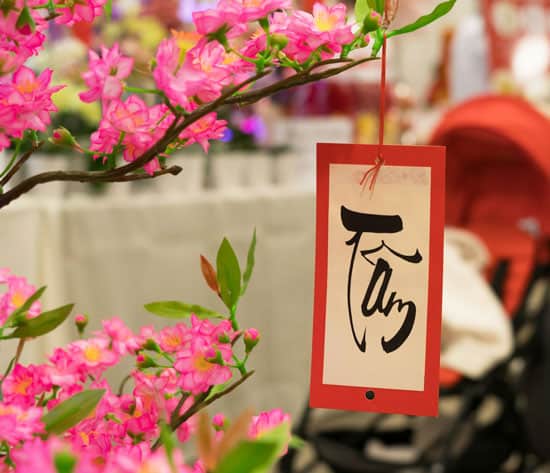
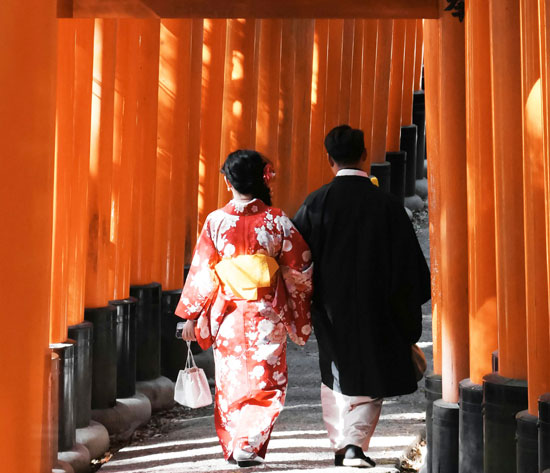
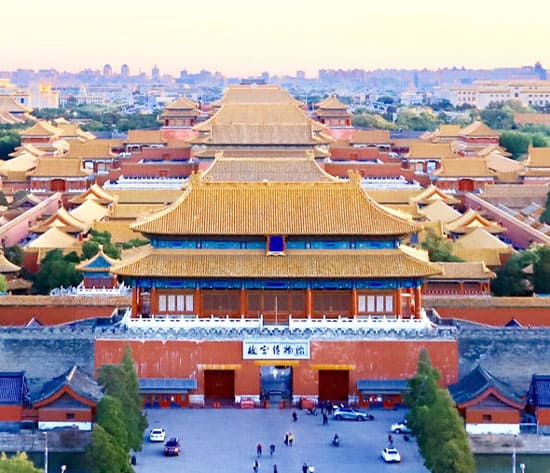
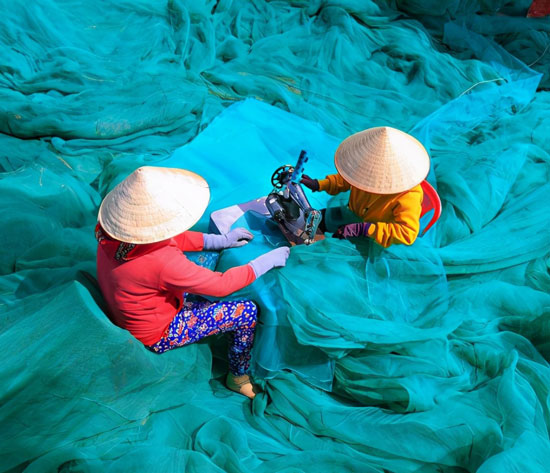
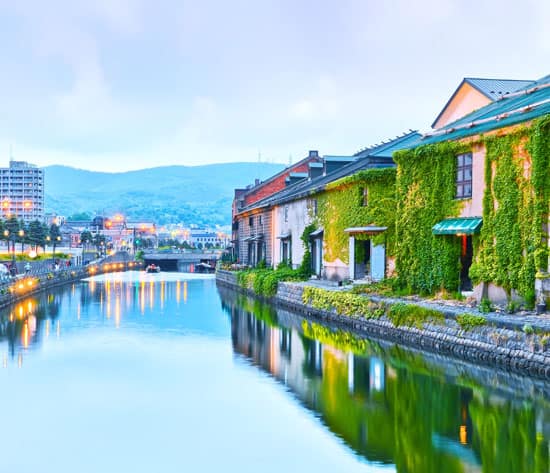
Have a Question?
You might see your comment appear on this page, but your email address and full name will not be published. Your personal information will remain confidential. Our Asia travel experts will get back to you as soon as possible. Required fields are marked *